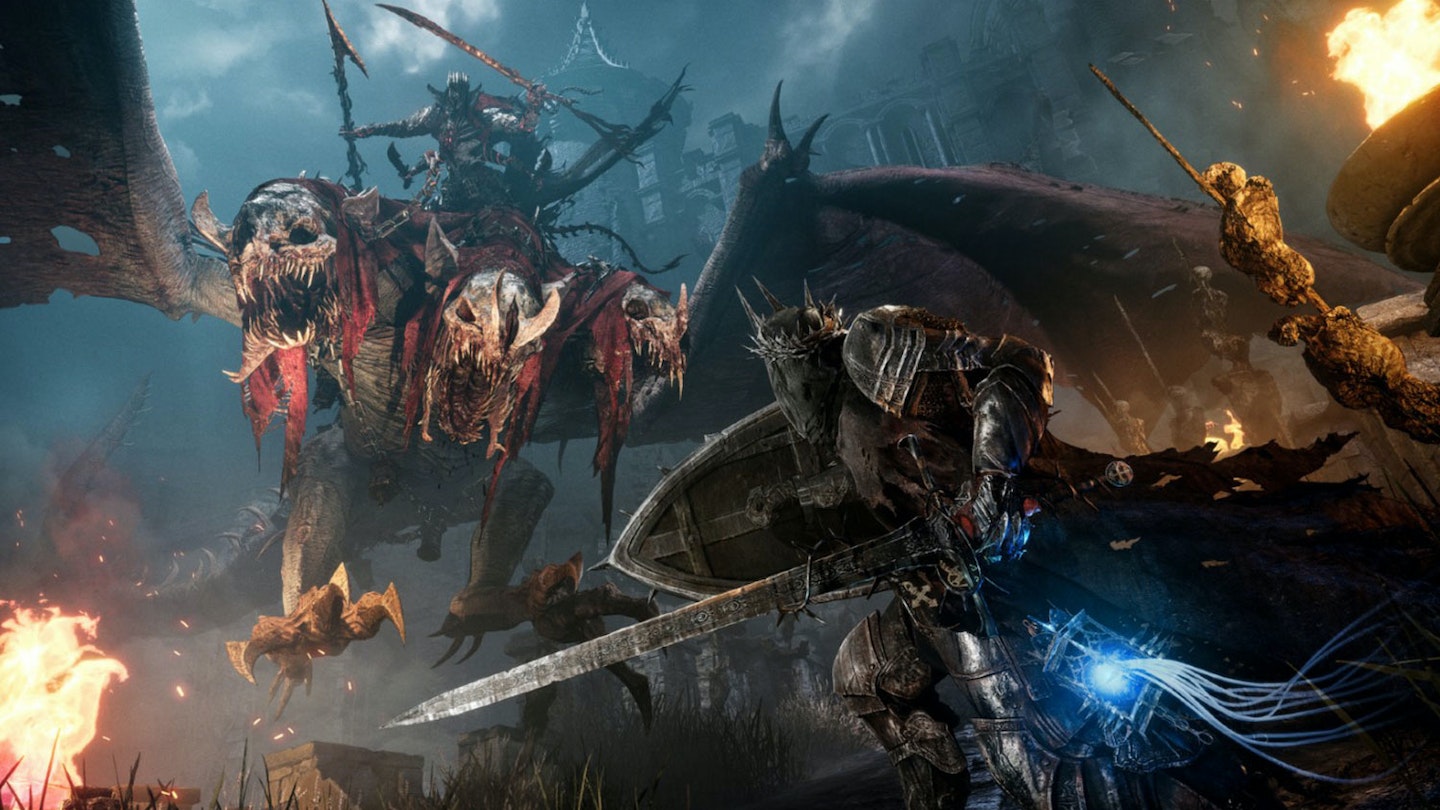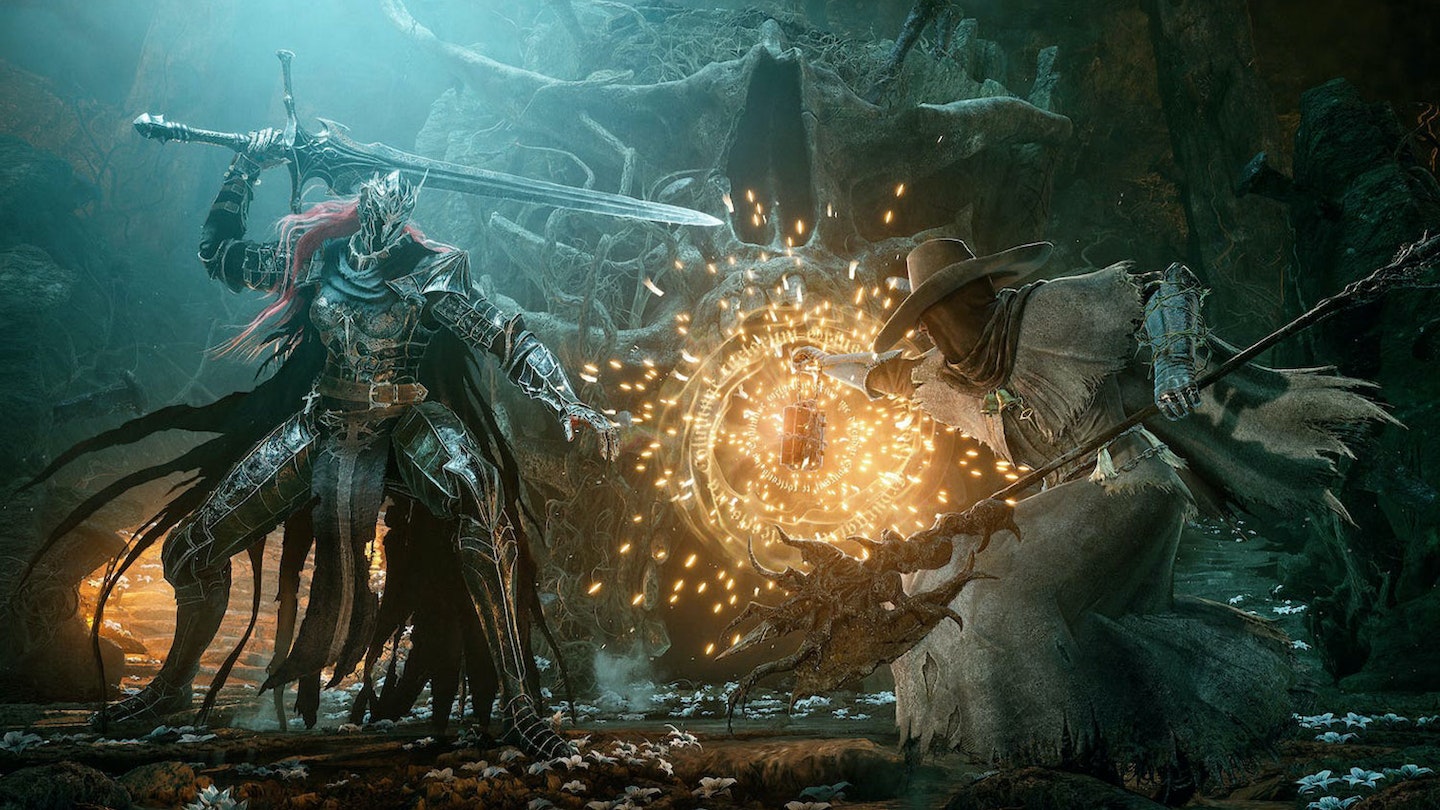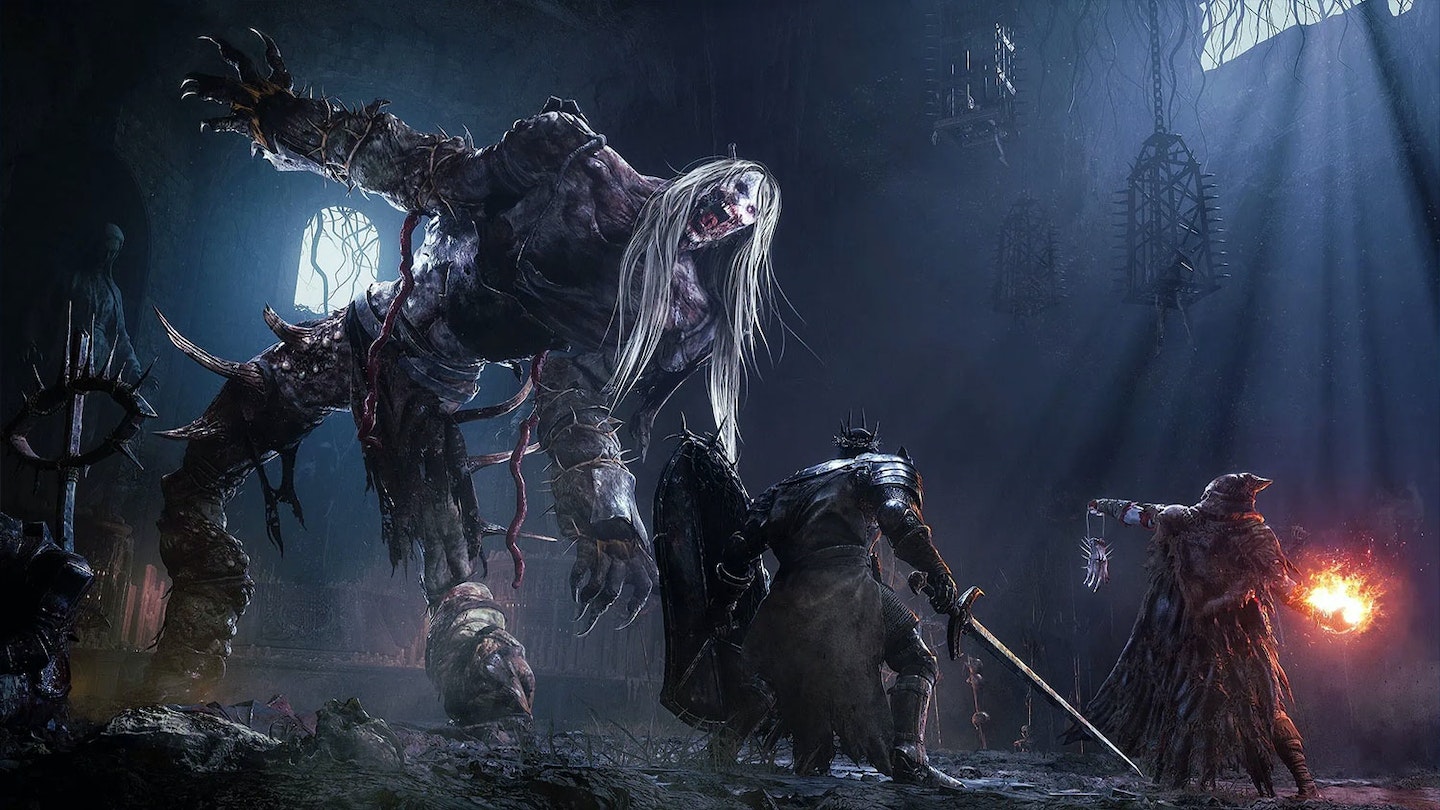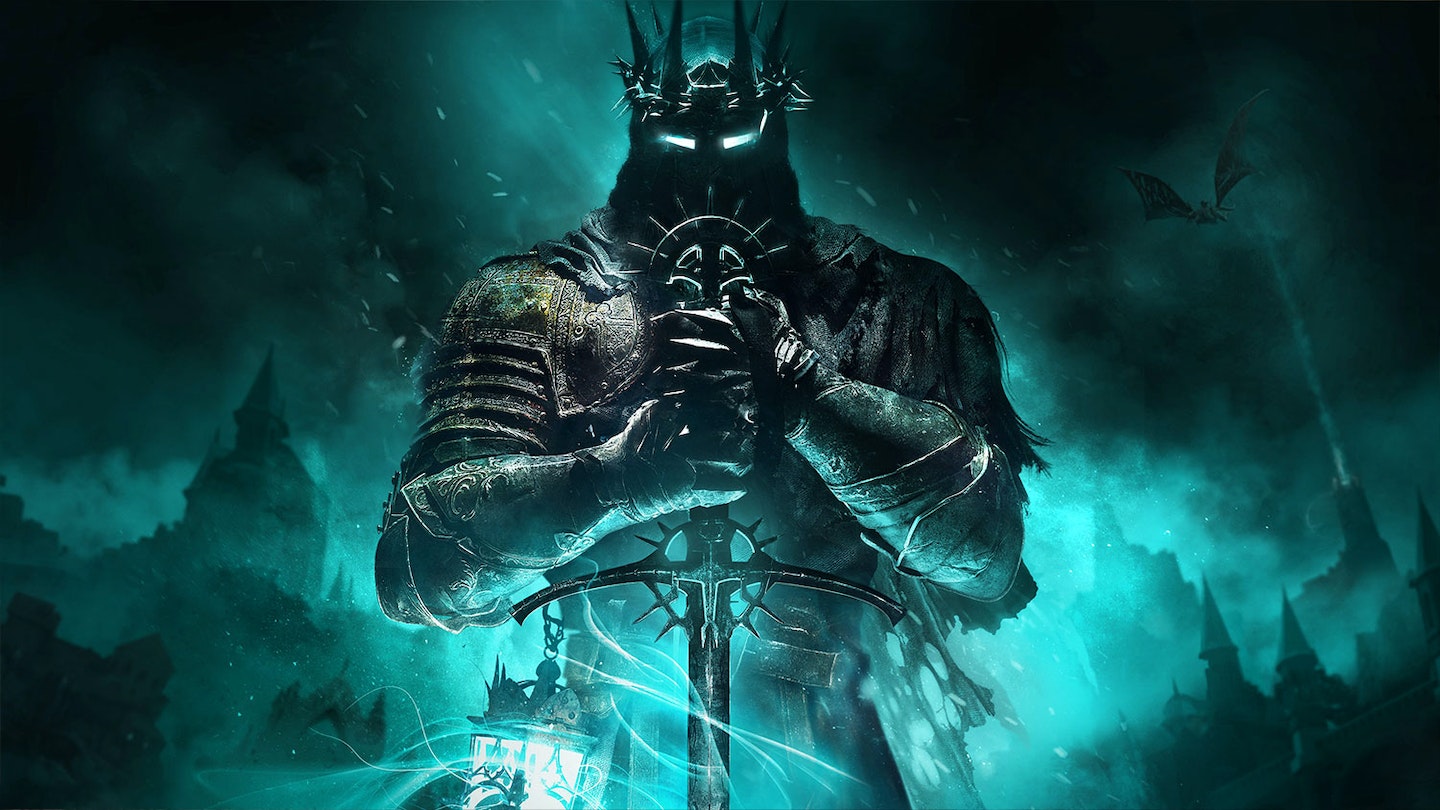Platforms: PS5, Xbox Series X|S, PC
No, you’re not having déjà vu – this game did come out before. Or rather, its identically-named predecessor did, back in 2014. That version of Lords Of The Fallen, which echoed the growing popularity of Dark Souls in form and structure, was met with a mostly warm reception, and publisher CI Games spent the near-decade since trying to get a follow-up off the ground. After hopping between developers and changing names a few times, we’re back where we started, with… Lords of the Fallen.
However, this is a game that’s more reboot than sequel. While developer Hexworks loosely references the original game, you don’t need to have played it to jump in here. There’s some lore that returning players will recognise – mainly centred on a dark elder god named Adyr wanting to claw its way back to the material plane – and the odd landmark that may be significant to players with really good memories, but for the most part this works perfectly well as a starting ground.

One of the biggest changes is that while the original was centred on a specific character, Harkyn, whose class and attributes could be customised to players’ liking, 2023’s Lords leans more towards the soulsborne formula of playing a nameless class archetype, chosen from a roster at the start. While this may feel more familiar to fans of the genre, it feels like it robs the game of one of its more original conceits.
And, ultimately, it remains a soulsborne, meaning you pretty much know the drill for how it plays by now – wander around a grimdark environment, kill some inventively disturbing monsters, gather their souls/blood echoes/general-XP-stand-in, die innumerable times, fight some bosses that should by all rights squish you like a bug. Rinse and repeat to the delight of masochistic gamers everywhere.
It’s that overbearing sense of familiarity that holds Lords of the Fallen back from greatness.
For the most part, Lords Of The Fallen doesn’t stray too far from that well-worn formula, still wearing its Dark Souls influences broadly and unashamedly. However, it has a fair few tricks up its sleeve to vary the experience, the biggest being that the entire experience spans two realities.
Initially, the action takes place in Axiom, the world of the living. It’s here, exploring dilapidated ruins and abandoned villages while killing the misshapen wrecks that populate their remains, where you’d be forgiven for thinking this is yet another Souls clone. But then there’s Umbral, the world of the dead. In one respect, this is your “second chance” world, where you resume battling the forces of evil when you lose all health in Axiom. Cleverly though, you can enter this shadow realm whenever you like, using the (plot important) Umbral Lamp.

The real kicker is that you’re exploring both planes of existence simultaneously. Umbral hides things, things that can only be seen in Axiom by shining the lamp’s light on them. Come to a dead end? There may be a bridge or passage in Umbral. Need to cross a chasm? In the world of the dead, you might be able to flay the soul of a tormented wretch, activating some infernal mechanism to activate a bridge of bones. It’s a genius approach to exploration, one that draws you down every nook and cranny to see what lurks there. Plus, it’s all magnificently spooky, creating a sense of permanent dread with the knowledge that something may be right next to you, watching, waiting…
Combat benefits from the dual realities idea too. Occasionally, enemies will seem to be untouchable, only for a flash of otherworldly light to reveal a spectral parasite buffing it from the other side that you’ll need to dispatch first. Having to hop between worlds - although getting out of Umbral is a bit trickier than getting in - really changes how you think about taking on the terrors in either one.

The flaying of souls also adds a neat layer to story and combat. Occasionally, you’ll stumble across lingering ghosts, hung in place; flay them and their last moments will play out, helping develop your understanding of the world and its history, while in battle you can literally yank out enemy’s souls, dealing them existential damage. It’s a fun touch that really opens up how you explore and survive this world.
The actual mechanics of combat are a bit less elegant though, as you’ll take “wither damage” even when blocking or parrying enemy attacks. While this can be reclaimed by retaliating, taking even one solid hit means the lost health is gone for good. This might not be such a problem – indeed, it’s exactly the sort of problem the biggest fans of soulsborne games seem to relish, challenging them to “git gud” and balance that ebb and flow of health – if not for a camera system that seems to actively hide enemies (whether you’re locked on to a primary target or not), meaning you’ll often take damage without realising it. Being able to dodge, deflect, and retaliate _should_make you feel like you’re dominating the enemy, but instead it too often feels like you’re being sucker punched.
Lords Of The Fallen is also victim to some unfortunate timing. Coming so soon after the release of Lies Of P, which mixed up the genre’s ingredients with its corrupted belle époque aesthetic, makes exploring yet another grimdark fantasy world here feel regressive. Even the layered worlds twist doesn’t help much – Axiom and Umbral are grim and grimmer, the latter an exaggeration of the former, its darkness ratcheted up to 11. The worlds of Lords are undeniably beautiful in their horrific presentation, but do feel like everywhere else you’ve explored in games of its ilk.
It’s that overbearing sense of familiarity that holds Lords of the Fallen back from greatness. If not for the genuinely brilliant dual worlds approach and the fun twists soul flaying adds to combat – and for the impressively grotesque bosses you’ll encounter along the way – this would feel like every other soulsborne that follows in FromSoftware’s footsteps. Not terrible by any means, but also not distinctive or polished enough to stand out from an increasingly populous crowd.
